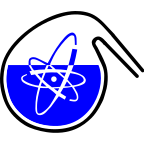Speaker
Description
For now, most radioactive reference sources are manufactured with electro-deposition. However, the electro-deposition procedure takes quite a long period of time and the operations are conducted using flammable solvents under high temperature. In addition, the products of electro-deposition may be oxidized and exfoliate after years of usage which can cause extra uncertainty of quantitative metrology. Thus, a more convenient method to prepare thin, homogeneous and chemical and mechanical stable references sources is required.
HP Membrane (DuPont Nafion PFSA Membrane) was selected to fix the radioactive nuclides (Am-241, Sr-90, etc.) and the aluminium plates were used as the supporter. The adsorption was conducted in the quartzose reactor. Some primary parameters of the reference sources, such as activity, surface emission rate, self-absorption, uncertainty and uniformity were tested to evaluate whether the quality meet the requirements of class one reference sources.
In the further investigation, we will focus on manufacturing novel membranes which are more suitable for preparing reference sources. Now available commercial membranes, as DuPont Nafion membranes, do not specially satisfy the need because of their space network determined by the cross-linkage. The radioactive nuclides adsorbed inside the membranes may reduce the emission rate and the uniformity. Therefore, new membranes especially the thin ones with functional groups distributing uniformly only on the surface are needed. On the other hand, we will check the interaction between the functional groups and radioactive particles emitted from the nuclides adsorbed and furthermore evaluate the radiation damage to ensure the stability of the reference sources.

